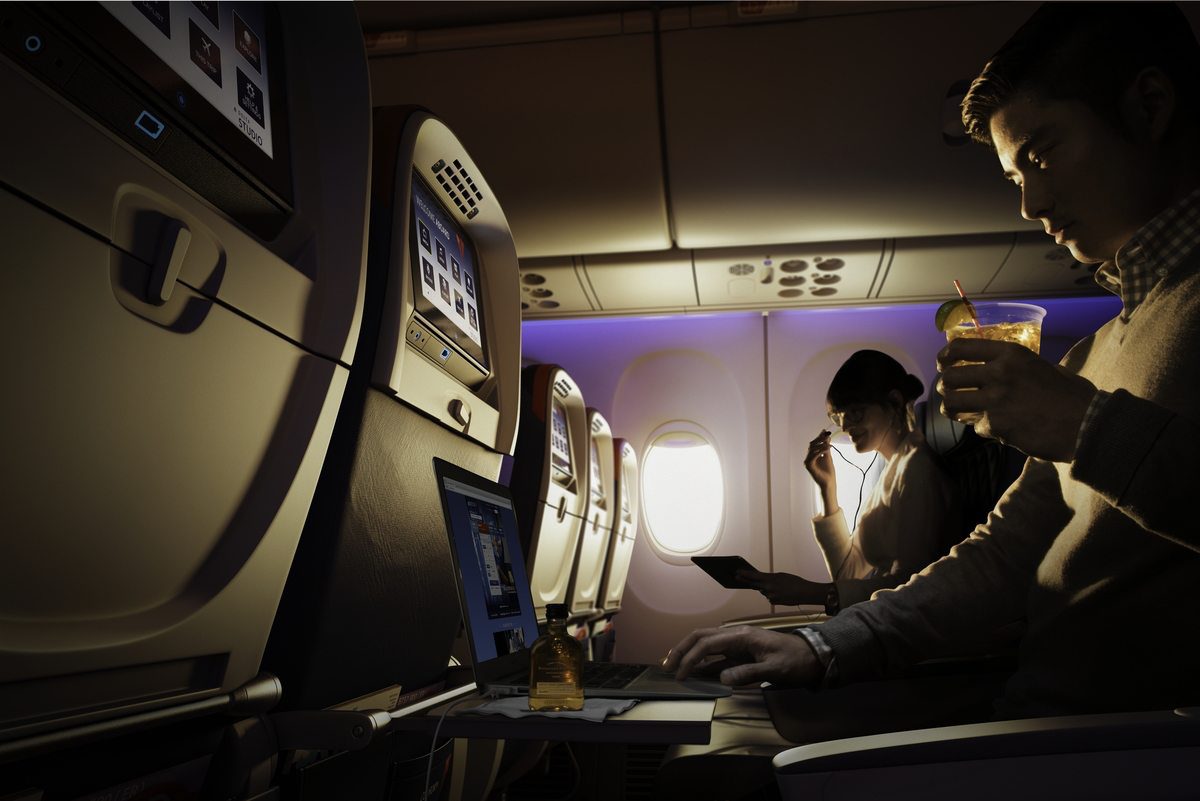Skift Take
At least on some planes, Gogo finally has enough bandwidth to satisfy every passenger. That's good news, but it will take some time before passengers can count on reliably fast Wi-Fi on every flight.
“Bandwidth abundance.” Those are two words many North American airline passengers have been waiting to hear for years.
On Monday, executives at Gogo, the in-flight connectivity company, said they were sending more bandwidth to some aircraft than passengers can consume. For now, that’s good news for flyers on two North American airlines — Aeromexico and Delta Air Lines — both early-adopters of Gogo’s new satellite Wi-Fi called 2KU. Brazil’s Gol Airlines is also a current customer, and eventually, American Airlines will install 2KU on some aircraft, as will several other global airlines.
For 2KU, early returns are promising, CEO Michael Small said on Gogo’s fourth quarter earnings call. Last year, 2KU delivered peak speeds of 20 megabits per second to aircraft, Gogo said, but this year, with technological improvements, that number should jump to 100. It’s a big increase from Gogo’s air-to-ground system, used today by passengers on United, Virgin America, Delta, and American, which tops off at about 9.8 megabits per second — not fast enough to support streaming or other bandwidth-heavy uses. Gogo’s KU-band satellite Wi-Fi on long-haul aircraft is faster, but those planes rarely fly shorter routes.
With 2KU, Gogo and airlines say passengers generally can use it as they do their home Internet.
“We are moving from a period of significant bandwidth constraints to an era of much greater bandwidth abundance,” Small said.
Installation takes time
As with everything in the airline industry, it will take years to install 2KU in all the planes slated to get the new technology. At the end of December, only 59 planes with 2KU were flying.
But Gogo says it is ramping up installations for 2KU customers. This year Gogo expects to add 2KU to 450-550 planes, the majority of them in North America. In 2018, Gogo plans 650-750 installations, with about 350 to 450 of them in North America.
Delta is Gogo’s largest customer, and it plans to install 2KU on more than 600 aircraft. By the end of last year, Delta said it had installed the service on roughly 35 aircraft.
Gogo said it takes about three days to install the technology on planes.
Changing pricing model
With its older air-to-ground technology, which the company calls ATG, Gogo has been forced to raise prices to push down demand. On many flights, Gogo wanted to dissuade people from using Wi-Fi, because if too many passengers logged on, the Internet would be slower.
Since there are no bandwidth limitations on 2KU, Gogo and airlines can experiment with pricing. They can charge lower prices to try to spur more people to buy Wi-Fi. Or they can give away the Internet, perhaps with a sponsor picking up the cost.
In the fourth quarter, Gogo said passengers were contributing a smaller portion of Gogo’s revenues than a year earlier. In many cases, sponsors like T-Mobile picked up the tab.
“The multi-payer trend, where a mix of passengers, airlines and third-parties pay for our offerings, is already reducing the percentage of our revenue that comes from passengers in commercial aviation,” Small said.
With pricing philosophies slowly changing, more airline passengers are logging on, Gogo said. In North America Gogo’s take rate — the average percentage of people using the service on each flight — was 7.3 percent in the fourth quarter, up from 6.1 percent in 2015.
Small said eventually Gogo and airlines have to ramp up their marketing efforts for Wi-Fi, something they generally haven’t done because they didn’t want too many passengers to log on.
“We are actively talking with all our airline partners [about] how they will better market our service once the bandwidth is there,” Small said. “Fundamentally, what’s going to make revenue grow is that we are moving to an era of much greater bandwidth abundance.”
Not every plane will get 2KU
While many airlines are adding new satellite Wi-Fi on larger jets, from Gogo or one of its competitors, most carriers are content to keep air-to-ground service on regional planes. It’s cost effective, and its antennas are more appropriate for smaller aircraft.
For now that means regional jet passengers may receive slower speeds than on larger jets. But Gogo said by next year it should have a next-generation system in place with consierably faster speeds.
“This solution leverages our existing 250 cell site networks and our 25 years of developing proprietary ATG technology,” Small said. “Next-gen ATG will bring unrivaled performance to regional commercial jets and larger business aircraft in North America.”
The Daily Newsletter
Our daily coverage of the global travel industry. Written by editors and analysts from across Skift’s brands.
Have a confidential tip for Skift? Get in touch
Tags: aeromexico, airline passenger experience, delta air lines, gogo
Photo credit: Delta is an early adopter of Gogo's 2KU technology. Delta Air Lines
